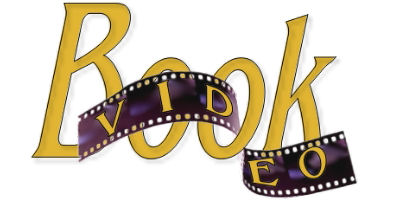 Linda Clare is the excited and proud author of her debut novel, The Fence My Father Built (Abingdon Press, 2009). She’s also the coauthor of three other books, including Lost Boys and the Moms Who Love Them with Melody Carlson and Heather Kopp (Waterbrook, 2002), Revealed: Spiritual Reality in a Makeover World (Revell, 2005) and Making Peace With a Dangerous God with Kristen Ingram (Revell, 2006). Linda is also an award-winning short story author and one of her stories was nominated for the Pushcart Prize in 2004. She teaches novel writing, essay and memoir at Lane Community College in Eugene, Oregon, where she lives with her husband, four grown children and five rescued but wayward cats. Visit her blog at :http://www.godsonggrace.blogspot.com. |
|
The Great Book Trailer Experiment Script |
|
With more than a decade of experience writing and teaching for the Christian market, I thought I knew how to promote a book. I already had three nonfiction books under my belt and had published countless essays, articles, and poems. Then I sold my debut novel, The Fence My Father Built, to the new fiction line at Abingdon Press. My editor, Barbara Scott, told me that in two short weeks a major book retailer needed my Book Trailer. In no time, my learning curve got nosebleed steep. I scrambled to put together what I call the Great Book Trailer Experiment. Watch It! Start it! We decided to use Windows Movie Maker. I wrote a script that included five crucial elements: First, an opening hook or tease (an emotional question); then the character (Muri Pond, a librarian from Portland who’s always wanted to find her birth father); followed by the setting/time (Contemporary, Central Oregon high-desert town of Murkee, rundown trailer, fence made from oven doors); and problem(s) (Joseph Pond’s estate, Indian heritage and alcoholism, a troublesome neighbor after water rights, Indian artifacts, Muri’s disillusionment with God). The fifth element, a resolution teaser, would go at the end of the video, hooking the reader with a hint of where the story goes. Make It! I introduced my character Muri Pond by showing a silhouette of her long-lost dad in cowboy hat, leaning on a wood fence, followed by a young woman lying in some grass as if daydreaming about him. The next slide came abruptly, with the stark black-and-white image of a graveyard and the simple words, Now it’s too late. While some have said the marker of a cross with RIP on it is too cliché, I wanted to be sure people understood that Joseph Pond, Muri’s dad, has died and that he was a Christian. For setting/time, I zoomed in, showing a slide of an old Air Stream trailer sitting alone on a wide-open field and included a short statement about how Muri is shocked when she sees her inheritance. The following slide was the most difficult, and I credit my husband for knowing how to get around the fact that I couldn’t locate any suitable photos of oven doors. He was able to remove the part of my book’s cover, which shows a woman standing in front of a fence of oven doors, so I could show only the fence. Because the fence is very important to the story, I wanted to display it alone with no other distractions. |
 The Fence My Father BuiltFrom there, the slides moved quickly through the other problems of the novel: a creek the neighbor is trying to get rights to and Indian artifacts Joe Pond warns Muri about through his journal. If I had it to do again, I might have used more easily read fonts and colors or cut the number of words. Finally, I exited out of my trailer with a short video clip of a sunrise. I wanted to show the faith element without resorting to shafts of light breaking through clouds, and I liked the sun rising over hills. We purchased medium-sized photos (about $20.00 a piece), not knowing the smaller size may have been just fine. Our total expenses, not counting CD labels or labor, came to $80.00. My biggest discovery? “Nonroyalty” doesn’t mean free. Play It! Time It! And of course, no one yet really knows if Book Trailers actually sell books. Yet I loved the process of pairing images and music with a story that has lived only inside my head all these years. If you’re wondering whether to make your own Book Trailer, consider your creativity, time, and financial resources. Decide on a program to use, write a bare-bones script, and choose images and music that get to the heart of your story. Put it all together, time your creation, tweak as necessary. Then use it as one part of your book’s marketing plan. Would I make another video? Absolutely. Even if my video never sells a single book, it has helped me understand my story, from themes to the emotions it triggers. For me, it was worth the steep climb for the Great Book Trailer Experiment. |








